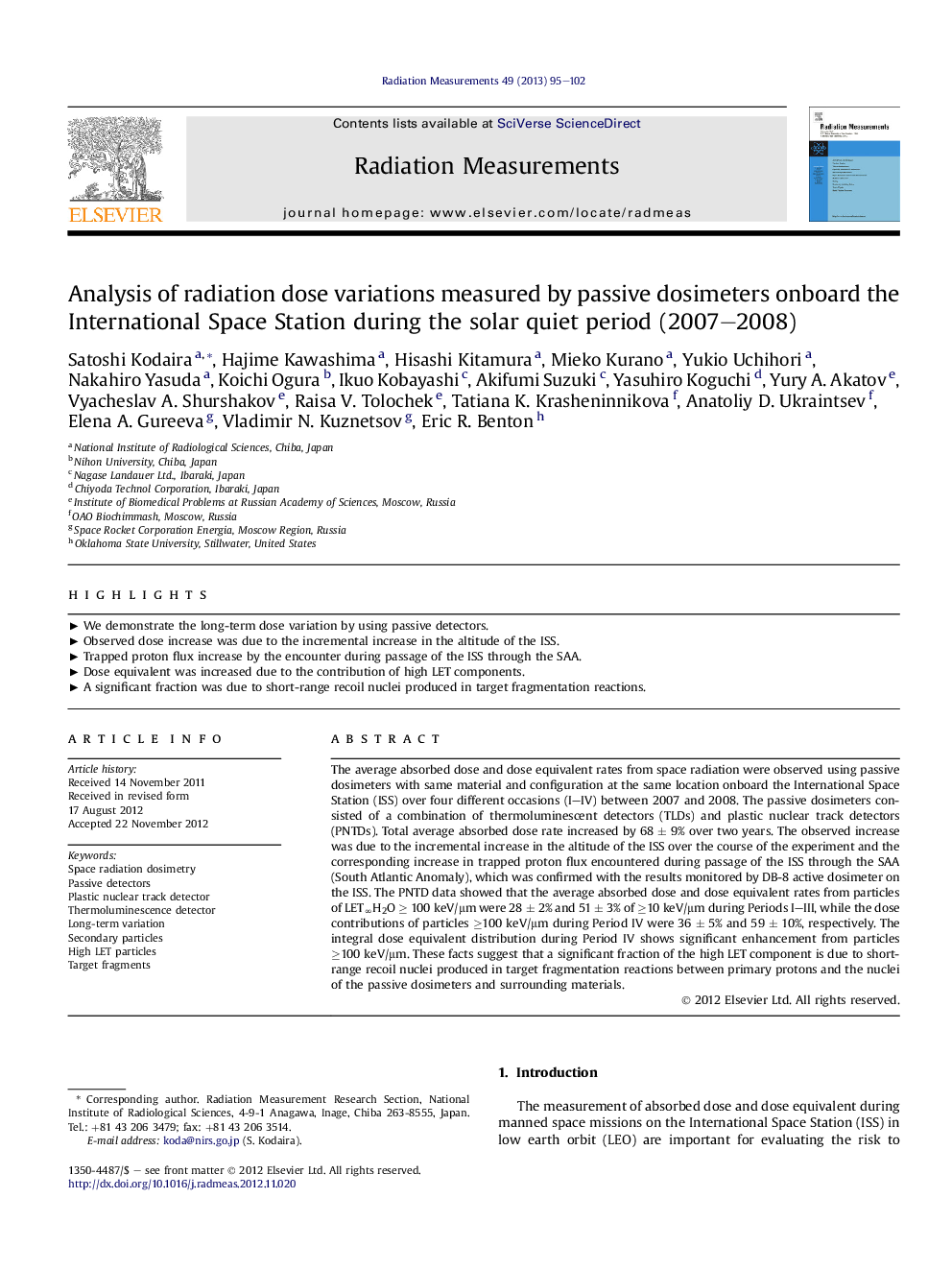| کد مقاله | کد نشریه | سال انتشار | مقاله انگلیسی | نسخه تمام متن |
|---|---|---|---|---|
| 1888424 | 1533439 | 2013 | 8 صفحه PDF | دانلود رایگان |

The average absorbed dose and dose equivalent rates from space radiation were observed using passive dosimeters with same material and configuration at the same location onboard the International Space Station (ISS) over four different occasions (I–IV) between 2007 and 2008. The passive dosimeters consisted of a combination of thermoluminescent detectors (TLDs) and plastic nuclear track detectors (PNTDs). Total average absorbed dose rate increased by 68 ± 9% over two years. The observed increase was due to the incremental increase in the altitude of the ISS over the course of the experiment and the corresponding increase in trapped proton flux encountered during passage of the ISS through the SAA (South Atlantic Anomaly), which was confirmed with the results monitored by DB-8 active dosimeter on the ISS. The PNTD data showed that the average absorbed dose and dose equivalent rates from particles of LET∞H2O ≥ 100 keV/μm were 28 ± 2% and 51 ± 3% of ≥10 keV/μm during Periods I–III, while the dose contributions of particles ≥100 keV/μm during Period IV were 36 ± 5% and 59 ± 10%, respectively. The integral dose equivalent distribution during Period IV shows significant enhancement from particles ≥100 keV/μm. These facts suggest that a significant fraction of the high LET component is due to short-range recoil nuclei produced in target fragmentation reactions between primary protons and the nuclei of the passive dosimeters and surrounding materials.
► We demonstrate the long-term dose variation by using passive detectors.
► Observed dose increase was due to the incremental increase in the altitude of the ISS.
► Trapped proton flux increase by the encounter during passage of the ISS through the SAA.
► Dose equivalent was increased due to the contribution of high LET components.
► A significant fraction was due to short-range recoil nuclei produced in target fragmentation reactions.
Journal: Radiation Measurements - Volume 49, February 2013, Pages 95–102